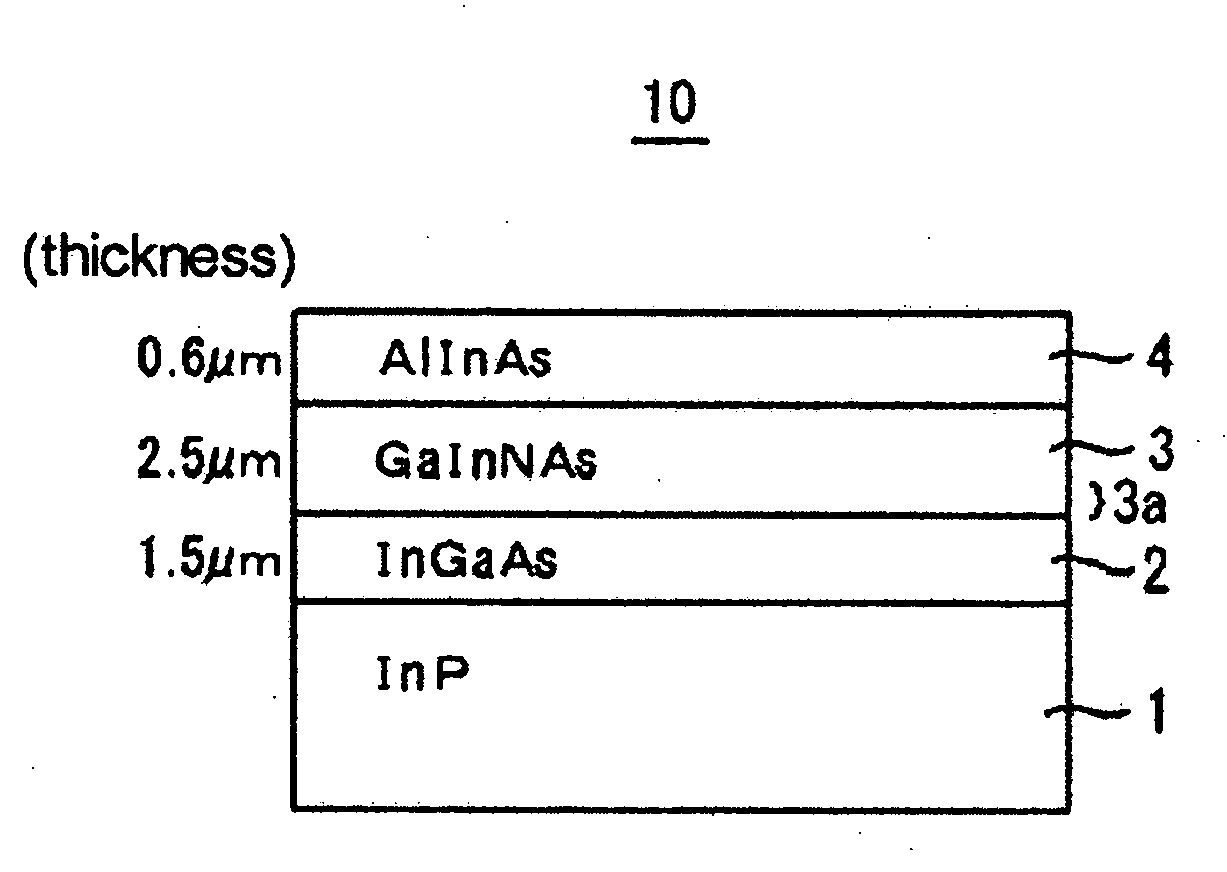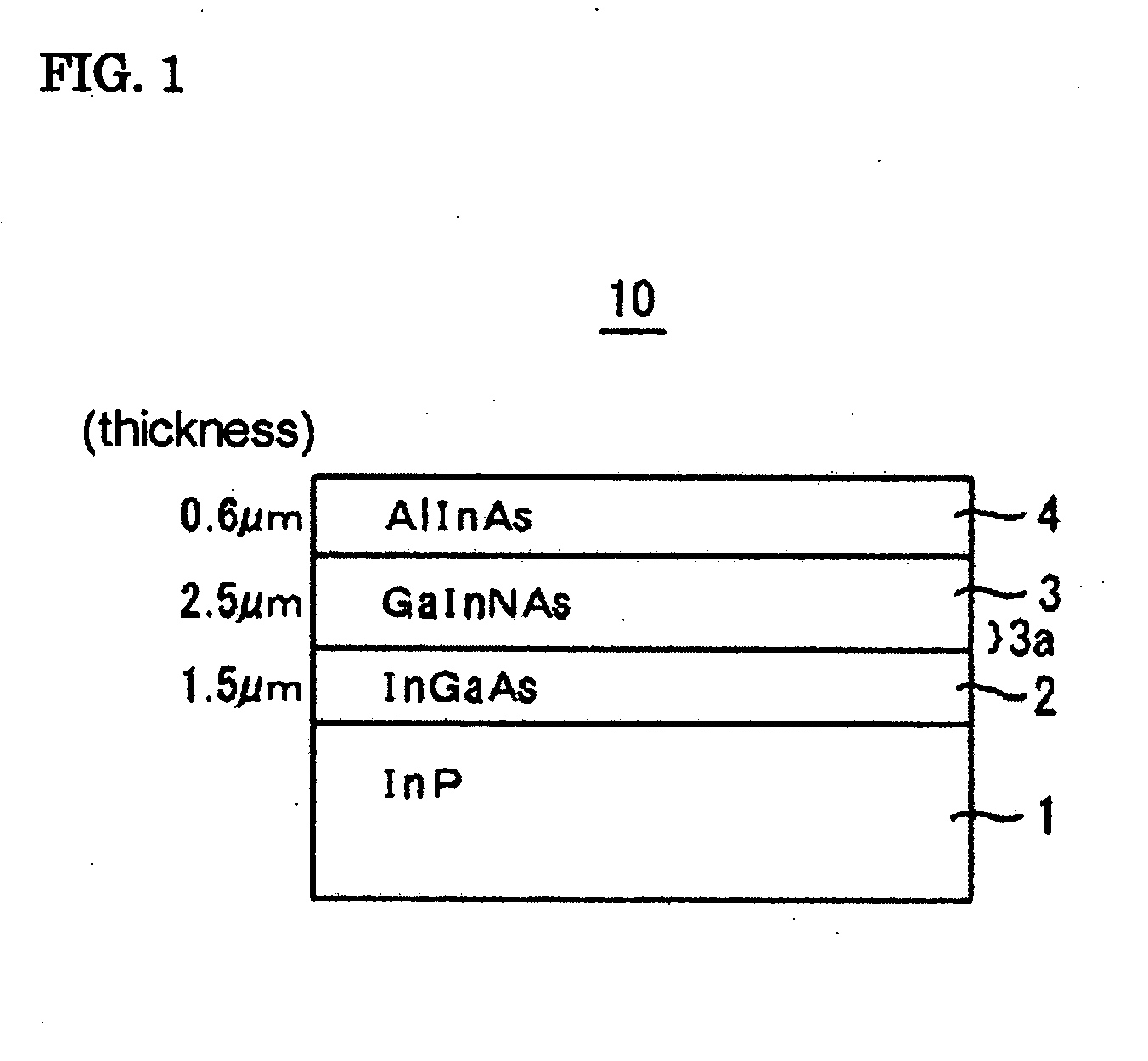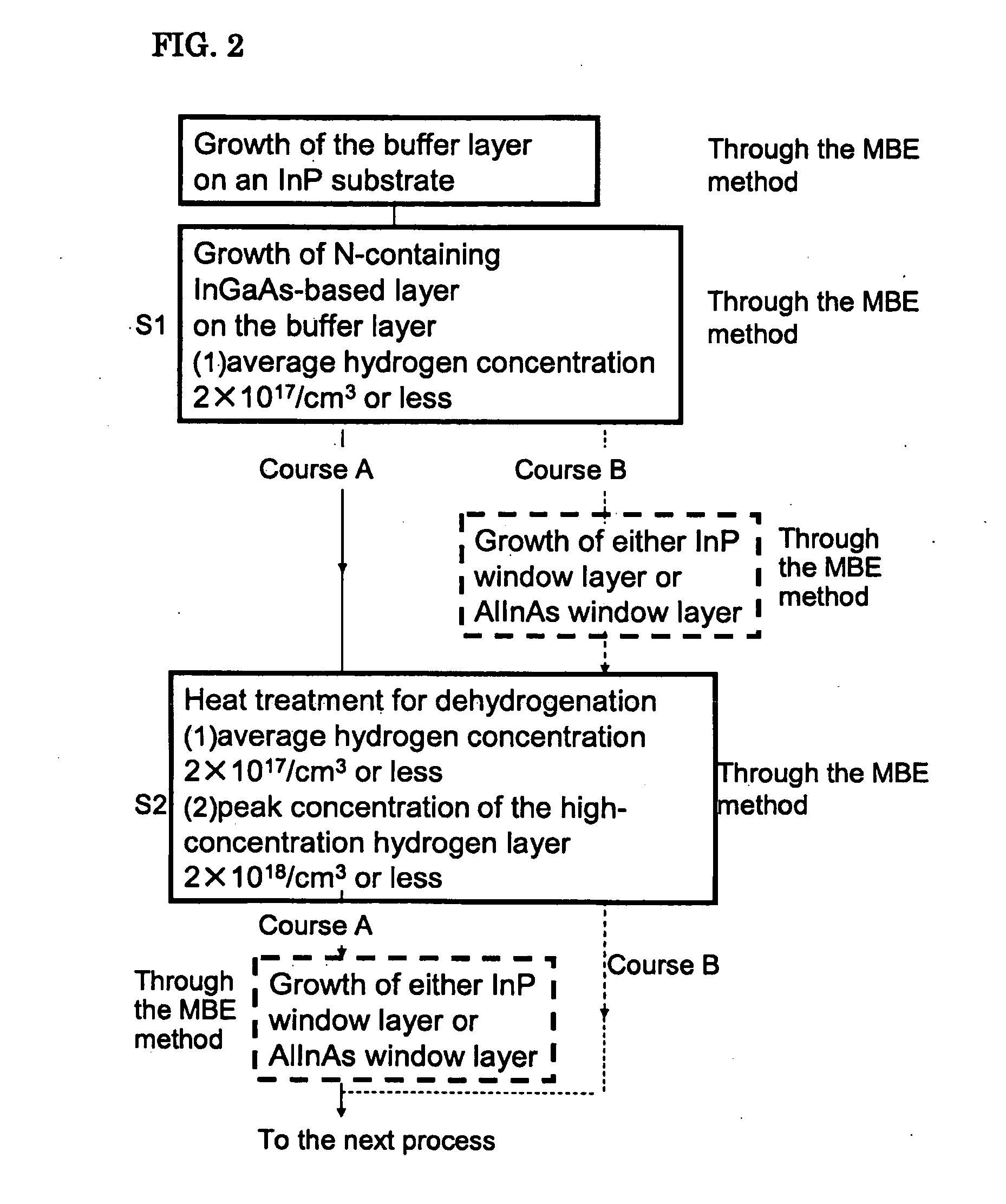Semiconductor device, epitaxial wafer, and method of manufacturing the same
a semiconductor device and epitaxial wafer technology, applied in the field of semiconductor devices and epitaxial wafers, can solve the problems of failure of semiconductor devices including these p elements, affecting the quality of semiconductor devices, and reducing the concentration of semiconductor devices, so as to improve the crystal quality reduce the average hydrogen concentration of the n-containing ingaas-based layer, and improve the quality of the stacked structure of high-quality
- Summary
- Abstract
- Description
- Claims
- Application Information
AI Technical Summary
Benefits of technology
Problems solved by technology
Method used
Image
Examples
embodiment 1
[0031]FIG. 1 is a sectional view showing a stacked structure 10 of a semiconductor device in Embodiment 1 of the present invention. The stacked structure 10 is formed of compound semiconductor layers as described in the following. The epitaxial wafer, which is regarded as an intermediate product for forming a semiconductor device including the stacked structure 10, is sold as such on the market. Hereinafter, the term “semiconductor device” used in the description of a compound semiconductor layer includes an epitaxial wafer. Stacked structure 10: (InP substrate 1 / InGaAs buffer layer 2 / GaInNAs receiving layer 3 / AlInAs window layer 4)
[0032]The thickness of each layer is roughly as follows: InGaAs buffer layer 2 is about 1 μm to 2 μm; GaInNAs light-receiving layer 3, which is an N-containing InGaAs-based layer, is 2 μm to 3 μm; and AlInAs window layer 4 is 0.5 μm to 1.5 μm. In the case where a semiconductor photodetector is a photodiode, a mask pattern is provided on the AlInAs window ...
PUM
| Property | Measurement | Unit |
|---|---|---|
| temperature | aaaaa | aaaaa |
| temperature | aaaaa | aaaaa |
| thickness | aaaaa | aaaaa |
Abstract
Description
Claims
Application Information
 Login to View More
Login to View More - R&D
- Intellectual Property
- Life Sciences
- Materials
- Tech Scout
- Unparalleled Data Quality
- Higher Quality Content
- 60% Fewer Hallucinations
Browse by: Latest US Patents, China's latest patents, Technical Efficacy Thesaurus, Application Domain, Technology Topic, Popular Technical Reports.
© 2025 PatSnap. All rights reserved.Legal|Privacy policy|Modern Slavery Act Transparency Statement|Sitemap|About US| Contact US: help@patsnap.com



